Serge Cajfinger swaps Paris for a Bahia beach house by Marcio Kogan
Brazilian architect Marcio Kogan designs a dream house out of concrete blocks and a eucalyptus-stick pergola for Paule Ka founder Serge Cajfinger

A decade ago, the Frenchman Serge Cajfinger spotted Marcio Kogan’s Paraty House in an issue of Wallpaper* (W*131). He was so smitten, he told another magazine (it’s allowed) that he dreamed of having his own house built by the Brazilian architect some day. By chance, Kogan saw this article, and wondered, ‘Who is this guy?’
Cajfinger, 64, founded fashion brand Paule Ka in 1988. By the time he sold a majority stake, in 2011, the company had annual sales of around €40m. Cajfinger had spent the first years of his life in Brazil and now he wanted to retire there full time, to build a casa na areia – a ‘house on the sand’. When he finally contacted Kogan, in 2015, the architect’s first response was, ‘I’ve been waiting for you.’
Kogan advised him to buy a plot near Trancoso, a low-key, beautifully preserved seaside town in Bahia province, home to a mix of locals and international jet-setters. There was very little beachfront land for sale, but Cajfinger got lucky and learned that a friend of a friend was selling a 6,427 sq m plot by the sea. He sold his Quai Voltaire apartment in Paris and bought it.

The pergola’s eucalyptus sticks cast changing shadows, while wooden shutters allow the interiors to be fully open. In the living area are a ‘C11’ soaf, by Marcus Ferreira for Carbono, and (against wall) a series of sculptures by Philippe Hiquilly
He and Kogan are a perfect pair, sharing the same passion for 1950s and 1960s modernism. The architects of Studio MK27, Kogan’s firm, work in close collaboration with clients on every project. And in this spirit, the team, led by architects Marcio Tanaka and Beatriz Meyer, extended to include Cajfinger, who considers himself a frustrated architect. ‘I was very directive,’ he says. ‘I knew what I wanted and didn’t want.’
Kogan adds, ‘He’s a very sophisticated guy. A dream client. He’s probably more perfectionist than we are – that’s very difficult.’
The architects distributed the living areas throughout five separate concrete blocks, a reference to the small cottages around Bahia. For a seamless connection between indoors and out, the boxes are grouped beneath a porous structure, a pergola made of eucalyptus sticks on a glue-laminated timber frame. ‘If it’s raining,’ says Kogan, ‘you take your umbrella to go to another part of the house.’
The house is raised 40cm off the ground, to enhance ventilation and the view while keeping snakes and lizards out. Folding wooden shutters control light, air flow and privacy. A permanent breeze provides natural ventilation, while collected rainwater is used to irrigate the garden. By law, the house had to be built at least 60m from the water and 10m from the road. It is long and narrow, so that all the rooms except the bathrooms face the sea. The actual living area occupies 328 sq m (including four guest bedrooms), while the pergola expands the surface area to 881 sq m.
RELATED STORY
Kogan, an erstwhile movie director, always brings his cinematic approach to architecture, with houses that tend to be horizontal – or as he says, ‘widescreen’. In this case, it is ‘very wide’. The pergola also adds drama, filtering the sunlight and casting shadows in graphic lines that change throughout the day.
Cajfinger showed up in Brazil with an exceptional collection of French art and mid-20th-century objects, including Charlotte Perriand chairs in wood and straw, Isamu Noguchi paper lamps, biomorphic steel sculptures by French artist Philippe Hiquily, and a Roger Capron dining table covered with ceramic tiles in a sea-god theme. Studio MK27 interior architect Diana Radomysler says that Cajfinger’s collection drove the design, and made her job very easy. Local artisans added touches such as headboards and benches crafted of solid brauna wood.
A floor lamp by Rock the Kasbah stands over a ‘Jangada’ chair and ottoman by Jean Gillon
The garden is another work of art, designed by Isabel Duprat, a disciple of the renowned Brazilian landscape architect Roberto Burle Marx. It is lush and tropical, with palm trees, pineapple plants, and winding sandy paths leading to the ocean. Duprat did not remove a single tree – in fact, 100 more were planted, and some seem to burst through the pergola roof. The garden’s organic curves extend to the swimming pool, and contrast with the rigorous geometry of the house. The effect reminds Cajfinger of glamorous images from the 1950s by photographer Slim Aarons.
The man who made his fortune designing clothing now spends his days barefoot and in shorts. He has never been happier. ‘It is rare to realise one’s dreams,’ Cajfinger says. ‘This is the house of my dreams.’
A Philippe Hiquily sculpture in an open corridor between the concrete volumes. Trees are allowed to burst up through the raised floor and the pergola roof
INFORMATION
A version of this article originally featured in the September 2019 issue of Wallpaper* (W*246)
Wallpaper* Newsletter
Receive our daily digest of inspiration, escapism and design stories from around the world direct to your inbox
-
 DAB 1α electric motorbike is the first product from French manufacturer DAB Motors
DAB 1α electric motorbike is the first product from French manufacturer DAB MotorsThe DAB 1α is an all-electric motorbike born out of industrial design, gaming culture and aviation technology, and now available to order
By Jonathan Bell Published
-
 The 2024 Ivor Novello nominations for songwriting have been revealed
The 2024 Ivor Novello nominations for songwriting have been revealed77 British and Irish songwriters and composers make up this year's nominees, announced tonight at London's Groucho Club
By Charlotte Gunn Published
-
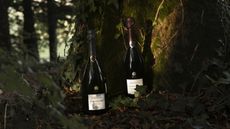 Why Bollinger’s La Grande Année 2015 champagne is worth celebrating
Why Bollinger’s La Grande Année 2015 champagne is worth celebratingChampagne Bollinger unveils La Grande Année 2015 and La Grande Année Rosé 2015, two outstanding cuvées from an exceptional year in wine-making
By Melina Keays Published
-
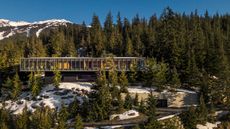 Marcio Kogan’s Studio MK27 celebrated in this new monograph from Rizzoli
Marcio Kogan’s Studio MK27 celebrated in this new monograph from Rizzoli‘The Architecture of Studio MK27. Lights, camera, action’ is a richly illustrated journey through the evolution of this famed Brazilian architecture studio
By Jonathan Bell Published
-
 Modernist architecture: inspiration from across the globe
Modernist architecture: inspiration from across the globeModernist architecture has had a tremendous influence on today’s built environment, making these midcentury marvels some of the most closely studied 20th-century buildings; check back soon for new additions to our list
By Ellie Stathaki Published
-
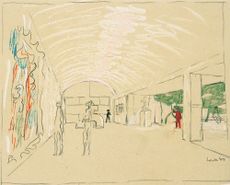 Louis Kahn's modernist mastermind celebrated through new collaborations
Louis Kahn's modernist mastermind celebrated through new collaborationsThe legacy of modernist architect Louis Kahn lives on to inspire a new generation, thanks to collaborations with family and fans
By Marina Cashdan Published
-
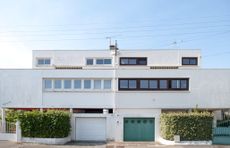 Royan Architecture Month showcases French modernism by the sea
Royan Architecture Month showcases French modernism by the seaRoyan Architecture Month 2024 launches in the French city, where many travel to see midcentury builds by the sea, from Notre Dame church to Palais des Congrès
By Stacy Suaya Published
-
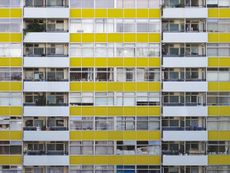 ‘London Estates’ surveys the architecture and influence of the capital’s council-built homes
‘London Estates’ surveys the architecture and influence of the capital’s council-built homes‘London Estates: Modernist Council Housing 1946-1981’, a new book by FUEL, is the perfect place to start for inspiration on how architecture can improve every sector of society
By Jonathan Bell Published
-
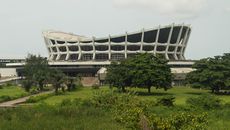 Afrobeats and modernism: how the concrete ‘ruins’ of Lagos become a stage
Afrobeats and modernism: how the concrete ‘ruins’ of Lagos become a stageWe explore the relationship between Afrobeats and modernism in Lagos, as the Nigerian capital’s concrete structures become a stage for the music genre
By Olorunfemi Adewuyi Published
-
 Brazil’s Casa Subtração contrasts dramatic concrete brutalism with openness
Brazil’s Casa Subtração contrasts dramatic concrete brutalism with opennessCasa Subtração by FGMF is defined by brutalist concrete and sharp angles that contrast with the green Brazilian landscape
By Ellie Stathaki Published
-
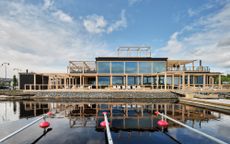 Is this the shape of wellness architecture to come?
Is this the shape of wellness architecture to come?Explore the future of wellness architecture through trends and case studies – from a Finnish sauna restaurant to UK cabins and a calming Canadian vet clinic
By Emma O'Kelly Published